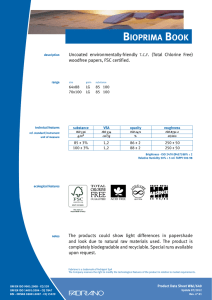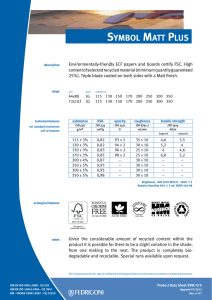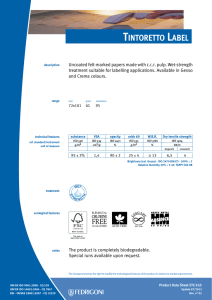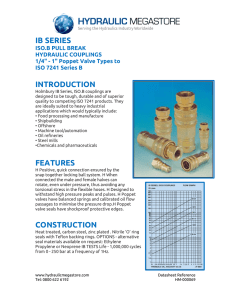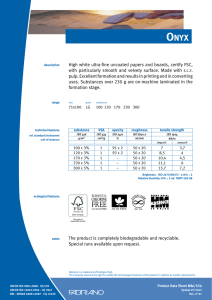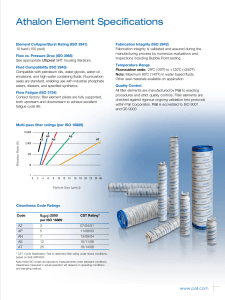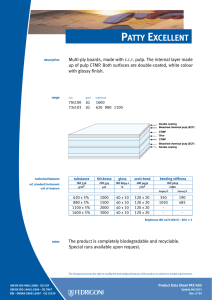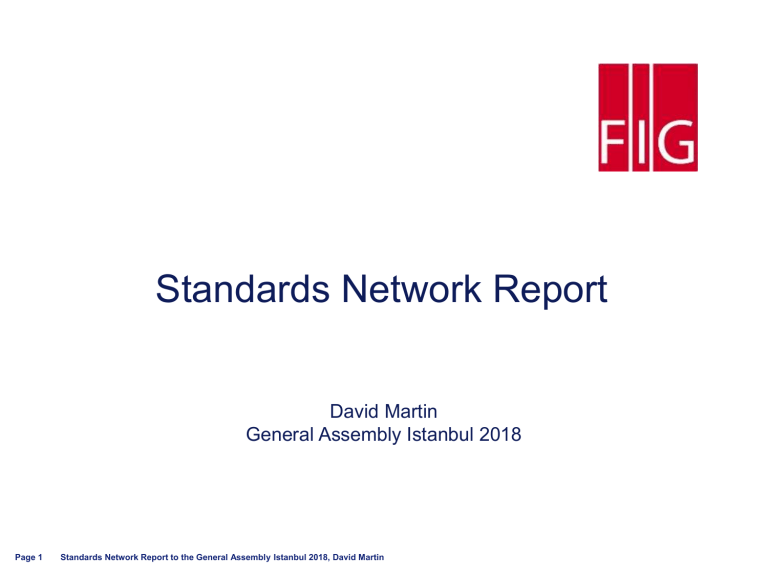
Standards Network Report David Martin General Assembly Istanbul 2018 Page 1 Standards Network Report to the General Assembly Istanbul 2018, David Martin WHY STANDARDS? ARE STANDARDS IMPORTANT? Page 2 Standards Network Report to the General Assembly Istanbul 2018, David Martin WHY STANDARDS? ARE STANDARDS IMPORTANT? If everyone does whatever they want… … the result can be gridlock! Page 3 Standards Network Report to the General Assembly Istanbul 2018, David Martin WHY STANDARDS? ARE STANDARDS IMPORTANT? In essence, a standard is an agreed way of doing something. Standards are the distilled wisdom of experts in their subject matter. Standards are knowledge that help drive innovation and increase productivity. They can make organizations more successful and people’s lives easier, safer and healthier. Page 4 Standards Network Report to the General Assembly Istanbul 2018, David Martin WHY STANDARDS? ARE STANDARDS IMPORTANT? Standards provide a consensus clear and unbiased way of doing things… Page 5 Standards Network Report to the General Assembly Istanbul 2018, David Martin FIG PROMOTES STANDARDS THROUGH THE STANDARDS NETWORK Liaison with standards bodies and NGOs Ensuring lead contacts to Technical Committees Proposing priorities on FIG’s standardisation activities Advising and providing information on standards to FIG members Page 6 Standards Network Report to the General Assembly Istanbul 2018, David Martin FIG STANDARDS NETWORK ACTIVITIES In principle, the Standards Network has members from all of the FIG Commissions → some commissions are more active than others. Key items presently linked to the Standards Network are: • ISO/TC 172 SC6 Work on Survey Instrument Standards • ISO/TC 211 Geographic Information/Geomatics • ISO 19152:2012 Land Administration Domain Model and LADM II • Non-ISO type Standards initiated by and/or which FIG is deeply involved: • International Property Measurement Standards Coalition • International Land Measurement Standards Coalition • International Construction Measurement Standards Page 7 Standards Network Report to the General Assembly Istanbul 2018, David Martin FIG INVOLVEMENT IN IPMSC, ILMS AND ICMS • International Property Measurement Standards Coalition • International Land Measurement Standards Coalition • International Construction Measurement Standards These three standards have come from a real need to address issues in the measurement of property, land and construction… The way property (homes, offices or shopping centres) are measured around the world varies dramatically. Which makes it difficult for property users, investors, occupiers and developers to compare space. The IPMSC is working to develop and embed a single property measurement standard. Around the world, levels of security in land ownership vary enormously. In some countries up to 70% of land is unregistered. This means that legitimate owners ‘rights’ are not recognised in a formal system of land administration. The ILMS is working to bring about consistency in land and property transaction reporting standards worldwide. The way construction projects are reported and costed varies significantly between markets making it difficult to compare projects around the world, increasing investment risk and impeding transparency. The ICMS is working to develop and implement international standards for benchmarking, measuring and reporting construction project cost. Page 8 Standards Network Report to the General Assembly Istanbul 2018, David Martin FIG INVOLVEMENT IN ISO/TC 172 SC6 SURVEY INSTRUMENT STANDARDS ISO 12858 Series Ancillary devices for geodetic instruments • ISO 12858-1:2014 Part 1: Invar levelling staffs • ISO 12858-2:1999/Amd 1:2013 Part 2: Tripods • ISO 12858-3:2005 Part 3: Tribrachs ISO 16331 Series Laboratory procedures for testing surveying and construction instruments • ISO 16331-1:2017 Part 1: Performance of handheld laser distance meters • ISO/AWI 16331-2 Part 2: Terrestrial laser scanner [Under development] ISO 17123 Field procedures for testing geodetic and surveying instruments • ISO 17123-1:2014 Part 1: Theory • ISO 17123-2:2001 Part 2: Levels • ISO 17123-3:2001 Part 3: Theodolites • ISO 17123-4:2012 Part 4: Electro-optical distance meters (EDM measurements to reflectors) • ISO 17123-5:2018 Part 5: Total stations • ISO 17123-6:2012 Part 6: Rotating lasers • ISO 17123-7:2005 Part 7: Optical plumbing instruments • ISO 17123-8:2015 Part 8: GNSS field measurement systems in real-time kinematic (RTK) • ISO/CD 17123-9 Part 9: Terrestrial laser scanners [Under development] ISO 9849 Series Geodetic and surveying instruments • ISO 9849:2017 Vocabulary Page 9 Standards Network Report to the General Assembly Istanbul 2018, David Martin FIG INVOLVEMENT IN ISO/TC211 GEOGRAPHIC INFORMATION AND GEOMATICS • • This work aims to establish a structured set of standards for information concerning objects or phenomena that are directly or indirectly associated with a location relative to the Earth. These standards may specify, for geographic information, methods, tools and services for data management (including definition and description), acquiring, processing, analyzing, accessing, presenting and transferring such data in digital/electronic form between different users, systems and locations. Page 10 Standards Network Report to the General Assembly Istanbul 2018, David Martin ISO/TC211 19152:2012 LAND ADMINISTRATION DOMAIN MODEL AND LADM II The LADM standard grew out of the Commission 7 work on the Core Cadastral Domain Model. It was accepted into the ISO/TC 211 work programme in 2008. Today is being used by an increasing number of countries. During the recent 7th Land Administration Domain Model Workshop held in Zagreb, Croatia, it was agreed that it is time to start development on a second edition – LADM II. This second edition should include: • Functionality for valuation, • A comprehensive support for 3D and 4D Cadastre. • Support for technical model/encodings (BIM/IFC, INTERLIS, RDF, InfraGML, CityGML). • Implementation of blockchain support for transactions. • Inclusion of processes using imagery and app based solutions. • Piloting of LADM implementations in real world environment. LADM II will be organised by the Domain Working Group Land Administration of the Open Geospatial Consortium. FIG has recently submitted a New Work Item Proposal (NWIP) to Secretariat of the ISO/TC211 to develop the second edition (LADM II) in close cooperation with global stakeholders and member organisations. Page 11 Standards Network Report to the General Assembly Istanbul 2018, David Martin FIG STANDARDS NETWORK MEETING The Standards Network meeting is scheduled on Tuesday, 8 May 14:00–15:30 in EMIRGAN HALL 1 Page 12 Standards Network Report to the General Assembly Istanbul 2018, David Martin FIG STANDARDS NETWORK Page 13 Standards Network Report to the General Assembly Istanbul 2018, David Martin

